Everything You Need to Know About Yakuza
by Dustin Bailey,
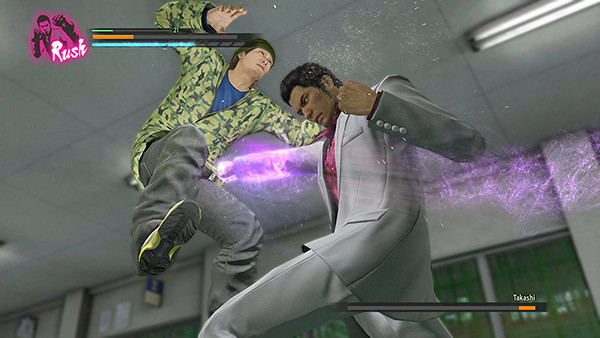
Yakuza's primary protagonist is Kazuma Kiryu, a nigh-invincible fighter known by legendary name as the “Dragon of Dojima.” The Dojima family is a subsidiary of the Tojo Clan, a massive yakuza organization rivaled only by its biggest competitor, the Omi Alliance, and every single member of the group is jockeying to raise their position and their family's. Yakuza stories are a staple of Japanese cinema, and the Yakuza games ape those complex, betrayal-filled plots at every opportunity, usually in the most melodramatic way possible. You're never more than a chapter away from some angry men with big muscles and exquisite tattoos ripping their shirts off for a fistfight duel over personal honor.
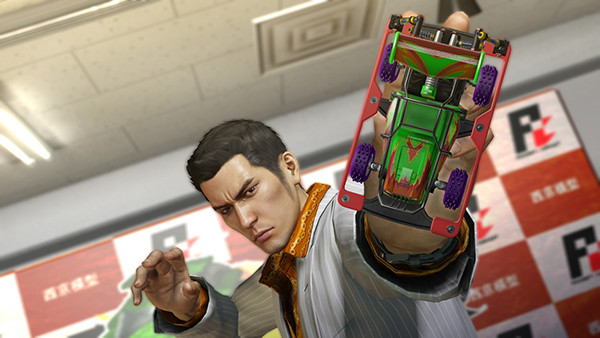
But that's only part of the appeal. The other half of Yakuza is its devotion to being very, very silly in all matters not pertaining to its core plot. The fictional borough of Kamurocho closely mirrors Tokyo's real-life red light district, but the people that populate it are the stuff of only the most screwball of comedies. Things would get progressively goofier with each successive entry, and by the most recent game we've had extensive quests that involved helping a timid dominatrix get over her lack of confidence, thwarting a chain of bullies and crooks to return a kid's stolen NES game, and engaging in a lavish minigame that allows burly yakuza men to take time off competing in slot car races.
Yakuza Kiwami—the PS4 remake of the PS2 original—will have its English release in just a few short weeks and I've had the chance to spend some hours with the localized version, which has served once again as a reminder of how wonderfully weird and unique this series can be. It's time take a look back at the whole of Yakuza and why it has become such a favorite, and where you should start if you're looking to get into this criminal world.
Yakuza — PlayStation 2 - 2005 (JP) - 2006 (NA)
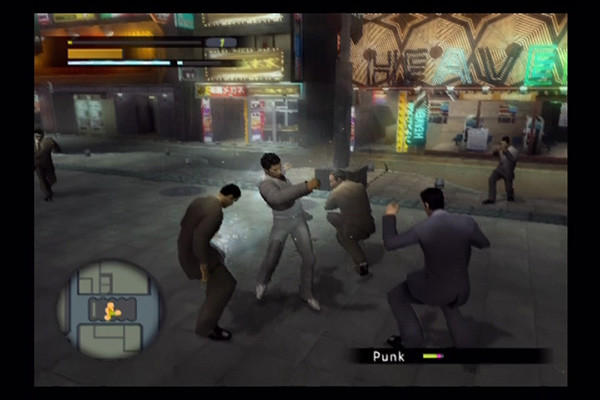
Yakuza opens in 1995, with Kiryu voluntarily taking the blame for the ultimate rap—the murder of the head of the Dojima family. After ten years in prison, he finds freedom while discovering that the whole Tojo Clan is in a mad race to recover ten billion missing yen. He returns to Kamurocho to find his closest friend a changed man, and the only clue to what's happening lies in the hands of a missing young girl named Haruka. The original game set the stage for everything that would follow, introducing the series' most prolific characters and locations. Goro Majima, the sometimes friend slash sometimes foe who serves as Kiryu's rival, makes his debut here, as does Kamurocho, the somewhat fictional beacon of Tokyo nightlife that each game revisits.
In the West, Yakuza was often described as a Japanese take on Grand Theft Auto, but that was never really the case. Where GTA offered a massive, city-sized sandbox for destruction, Yakuza focused on a much smaller bit of town detailed with specific shops, bars, and hostess clubs that you could drop in on at any time. In fact, based on the array of minigames—ranging from karaoke to UFO catchers—its resemblance to Sega's own Shenmue carried a little more weight. The combat was a little clunky even then, but the combination of street fights with RPG-style random battles and experience points was novel enough to keep it interesting.
Unfortunately, the localized version of the game seemed to be doomed from the start. It released nearly a year after the Japanese original, and just a few months before the launch of the next-gen PS3. It was also saddled with a poor English dub, and the cast—consisting of actors like Michael Madsen, Eliza Dushku, and Mark Hamill—couldn't do much with a script that seemed to interpret “gritty” as “absurdly cursey,” losing the life of the story in dialog trying way too hard to be profane and edgy.
Yakuza 2 — PlayStation 2 - 2006 (JP) - 2008 (NA)
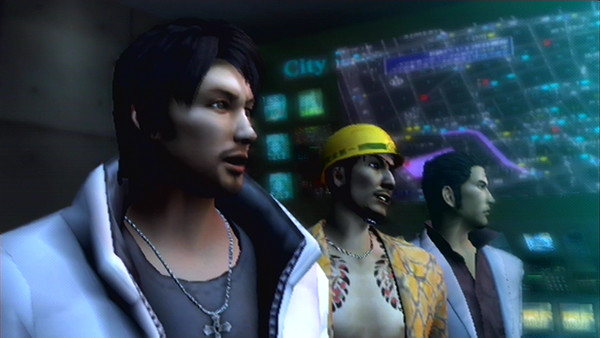
Yakuza 2 was mostly more of the same, with a few combat refinements and an additional, Osaka-based area to explore. Despite its similarities to the previous game, it remains a fan-favorite thanks to its depiction of an epic conflict between the Tojo Clan and Omi Alliance. It also features one of the only significant love stories present in the series, with Kiryu pairing up alongside a cop named Kaoru Sayama to set right the yakuza war. And, of course, it features a fistfight with a tiger.
But if Yakuza's English release was doomed, Yakuza 2's was dead on arrival. It did feature the original—and excellent—Japanese voice work, but by the time of its worldwide release in 2008 it was competing on PS2 against the likes of Metal Gear Solid 4 and Fallout 3. An HD remaster of both this and the first game hit PS3 and Wii U a few years ago, but those releases never left Japan. The limited PS2 release had been a collector's item commanding prices over $100 on the secondary market until earlier this year, when a second print run of the series got those prices back under control.
Yakuza 3 — PlayStation 3 - 2009 (JP) - 2010 (NA)
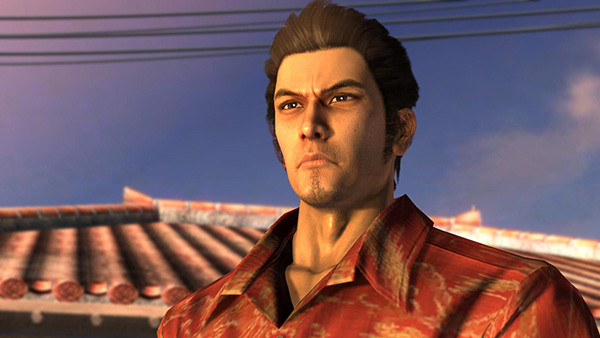
Yakuza 3 unfortunately remains perhaps the least-favored entry in the main series. Kiryu has retired from criminal life in order to run the orphanage that he grew up in, and caring for the Haruka and the other kids at Sunshine makes for an incredibly slow opening act. The hero's role as an improbable teddy bear-hearted superman remains one of my favorite bits of later games, but the plodding pace of the simple life doesn't make for such a great game here. The start of the PS3 era does mark when the combat started moving from “tolerable” to “fun,” with faster movement making everything sing and the HD visuals making each punch—but especially the finishers—brutally satisfying.
Yet there was another localization misstep, this time in the form of cut content. The removal of quiz shows heavily reliant on knowledge of Japanese culture was at least reasonable, but the dismissal of hostess clubs seemed to many fans like censorship. The story's all there, as are side quests in the triple digits, but the handful of missing pieces left the whole package feeling incomplete. Sega's official reasoning of pulling elements that “didn't resonate with western culture” rang pretty hollow when so much of Yakuza's appeal in the West is its virtual tourism of Japan.
Yakuza 4 — PlayStation 3 - 2010 (JP) - 2011 (NA)
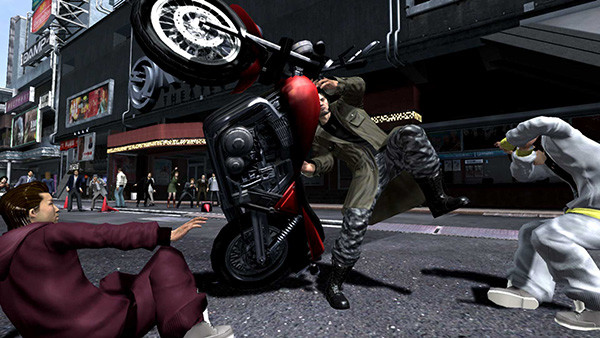
Yakuza 4 might just be the pinnacle of the series. Kiryu is joined by three other playable characters, each of whom finds himself tied up in a yakuza conspiracy once again involving a whole lot of missing money. Shun Akiyama, a “loan shark” who actually hands out interest-free lumps of cash to needy, driven people, anchors the first act, and his easygoing sarcasm makes him one of the most lovable characters in the series. One of the franchise's most memorable tough guy cutscenes accompanies Taiga Saejima during an improbable hit against scores of rival yakuza.
While it's the cast and story that brings the fourth game together, the yet-more-refined combat also helps. Each of the four characters has their own fighting style and move upgrades, keeping everything varied throughout the lengthy game. That's alongside an even more expanded set of minigames and side activities, which thankfully remained intact for the English release.
Yakuza 5 — PlayStation 3 - 2012 (JP) - 2015 (NA)
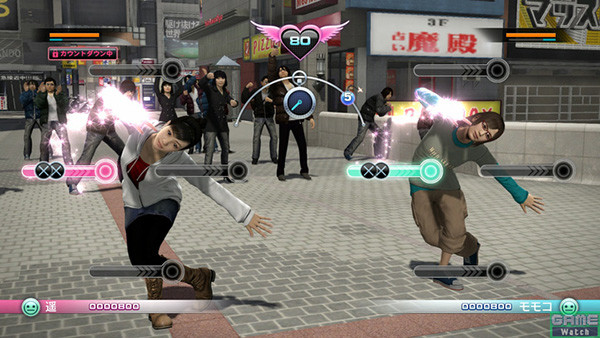
The fifth entry doubles down on everything the series had become known for. There are more playable characters—five instead of four this time—more side stories, more minigames, and more plot. The entire series often struggles under the weight of conveying so many changing alliances of so many hierarchical factions inside the yakuza, but with 5 spread so thin across so many characters the story buckles into nonsense about a dozen times over.
But despite the weakness of the main story, Yakuza 5 succeeds on the merit of how wild and weird its side content is. Kiryu opens the game as a taxi driver, with a full game's worth of side missions best described as Sane Taxi, where you need to strictly obey safety and traffic laws to get your passengers to their destination. Taiga takes to the mountains for a hunting quest with survival mechanics straight outta Metal Gear Solid 3, and this adventure culminates in a life or death battle against a legendary bear. Even weirder than that is Haruka's turn as protagonist, where she works to realize her dream of becoming a pop idol, and the game's street combat turns into a series of rhythm-based dance battles. Diving fully into all those side stories can make Yakuza 5's length rival that of a Persona game, but every minute of that time is wonderfully weird.
Yakuza 0 — PlayStation 4 - 2015 (JP) - 2017 (NA)
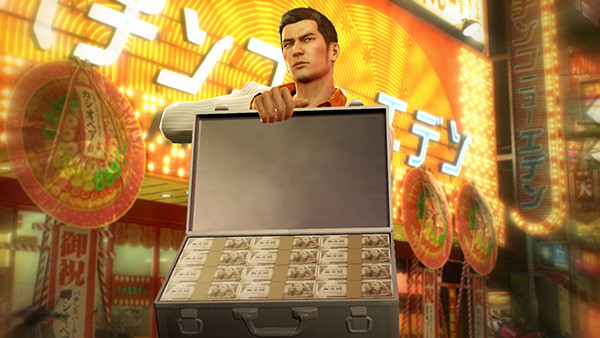
Yakuza 0 reigns in some of the previous game's excesses, and the result is maybe the most effective combination of goofy side stories and gritty crime drama the series has managed yet. Set in the bubble economy of late-80s Japan, this prequel explores the origins of Kiryu and Majima in a world utterly flush with cash. Everything revolves around money, and business minigames have Kiryu making billions in real estate while Majima does the same managing the staff at a hostess club.
Kiryu's side of the story is fine, but the real star of the game is Majima, whose “not having any of your crap” demeanor makes him one of the most compelling protagonists in the story. If anything, Yakuza 0 makes Majima a little too likable, which casts his villainous moments throughout the series in much more upsetting light—particularly given how quickly his turn to the dark side occurs. But that's a small consideration given how strong the characterization otherwise is.
0 also features by far the best brawls in the series so far. Both characters have three unique fighting styles through most of the game, letting you switch between fast strikes, heavy hits, and balanced options at the press of a button, and everything moves so quickly it stays exciting throughout. This was a hybrid PS3/PS4 release in Japan, and while things like the pace of loading in and out of discrete areas serves as a reminder of the PS3 roots, the current-gen version largely avoids feeling dated. And if there were any lingering concerns about censorship, thouse should certainly be abated—for better or worse, the English version of the game leaves such steamy considerations as live-action gravure videos and a gambling arena populated by bikini-clad wrestlers fully intact.
Yakuza Kiwami — PlayStation 4 - 2016 (JP) - 2017 (NA)
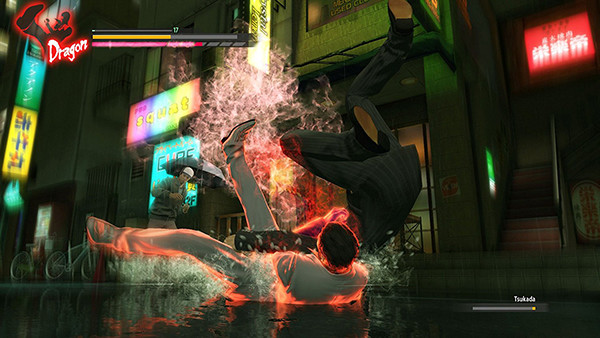
I knew Yakuza Kiwami was a remake of the original game, but I didn't know it would also essentially serve as a sequel to 0. That's what has struck me most after spending about ten hours with the first five chapters of Kiwami—it looks like 0, it plays like 0, and new bits of dialog here and there help to recontextualize the story in light of the prequel's events. Kiryu immediately has access to all of the fighting styles from the previous game, including the hidden one unlocked after completing the real estate story, meaning that the combat is vastly expanded over the original game.
The introduction of that refined combat system with the story that launched the series would be reason enough to be interested in Kiwami, but it also features more. More of everything. If you've played Yakuza and you're wondering how I could have possibly played 10 hours before clearing chapter five, it's because Kiwami's selection of side content has been massively expanded, bringing much closer in line with the post-4 games. The streets are teeming with people in trouble, and things like the Pocket Racer minigame—potentially hours of battling toward slot car championships—pick up from 0.
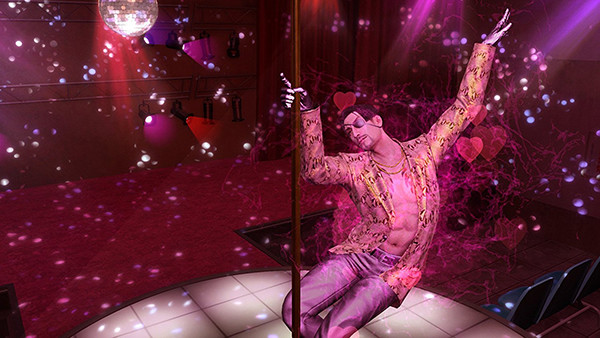
Kiwami's biggest addition is known as “Majima Everywhere,” and it's already offered some of the silliest moments I've ever seen in the series. Majima's relationship with Kiryu in the original game is pretty straightforward—he just wants a good fight. Kiwami sees that relationship expanded to the most ridiculous degree, with Majima popping out of trash cans and giant traffic cones in order to surprise Kiryu and get that satisfying battle. Those situations consistently build in absurdity, and the progressive battles unlock the forgotten skills of Kiryu's most powerful combat style. The possibility of meeting Majima on the streets at any turn adds an undeniably intriguing layer to exploring Kamurocho, even if the silliness of those meetings can undercut Majima's more serious role in the story proper.
But even with all those additions in the margins, Kiwami sticks very close to the original story. In some cases, seeing those scenes rebuilt in a modern game can highlight flaws that used to seem par for the course. Things open with a fetch quest that really slows down the opening hour before the plot kicks off, and while that wasn't out of place in a PS2 game it's much more jarring now. And there are a few scenes where characters just pop up in the most convenient of circumstances—a staple of the pulpy stories Yakuza draws from, but far more prevalent in the original.
Yet the original game's other flaws, like clunky combat and a lack of side content compared to later entries, are entirely rectified by Kiwami, which has made it a joy to revisit Kamurocho so far. Even given the pacing issues the plot remains an intriguing one, and given its limited scope compared to later games it's a more coherent one to follow.
Yakuza 6 — PlayStation 4 - 2016 (JP) - 2018 (NA)
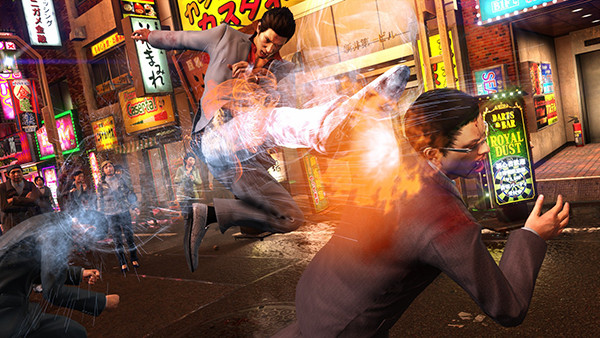
Yakuza 6 is the only game in the main series far off from Western release, but fear not! Sega has already confirmed it will be hitting worldwide in 2018. Footage of the Japanese version looks positively tantalizing—this is the first PS4-exclusive game in the series, and after years on the PS3-based engine that powered the previous games simple things like walking in and out of convenience stores without loading seems so refreshing. Yakuza 6 will offer a lot more than that—on a bullet point list, the inclusion of big New Japan Pro Wrestling stars like Kazuchika Okada and Tetsuya Naito as rival gang leaders is especially interesting—but we'll have to wait some time to see it in English.
Everything Else
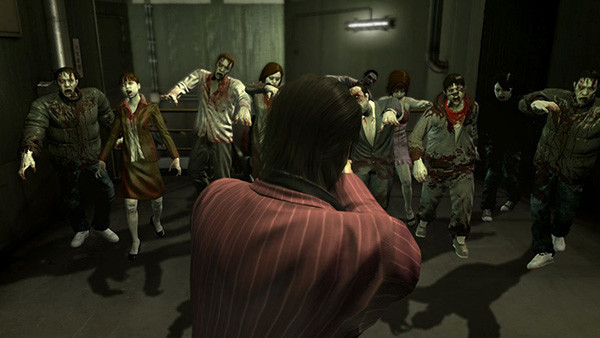
While that covers everything related to the main series, Yakuza has seen no shortage of spin-offs and side-stories, though most of those have continued to remain in Japan. The first of these was the PS3 game Kenzan!, an Edo-period drama that adapted the action to a historical setting. A few years later, Ishin! would also explore historical Japan on both PS3 and PS4, but is otherwise completely unrelated to Kenzan!. Modern-day side stories also came to PSP in the form of the Kurohyo games, which feature a separate cast having their own Kamurocho adventures.
The one side-story that did come West was Yakuza: Dead Souls, which built on Yakuza 4 and set a cadre of series favorites into battle against a zombie apocalypse. Brain-hungry undead were very trendy in the early 2010s, but Dead Souls is often forgotten about these days—and not without reason.
Adaptations have brough Yakuza to screens big and small, as well. A film known in the West as Like a Dragon—a literal translation of the series' Japanese name, Ryu ga Gotoku—loosely retells the story of the original game, and was officially released in English. The strangest version of the story has to be the play, however, which rebuilds the story of Yakuza for live actors on stage.
Where to Start
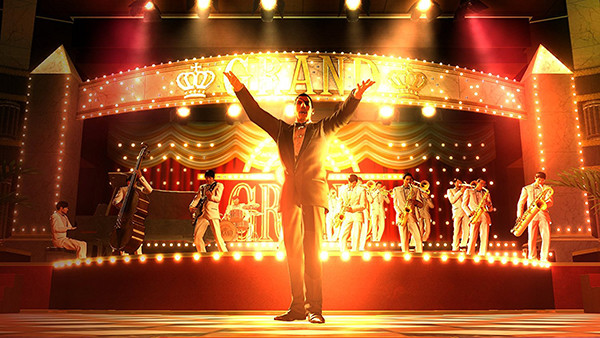
With a series so deep in factional warfare and characters with constantly shifting alliances, you might think it's tough to find a way to jump in, but there are actually several good places to start. Of course, the most obvious would be the original PS2 game, provided you have a system that can play it. If you don't mind dated combat it's a fine way to start, and the PS2 games provide some of the most cohesive stories in the series—just be prepared for the gameplay to not really cohere until the PS3 games.
With that in mind, Yakuza 4 actually makes a fine entry point. It's one of the strongest stories in the series, was the first title to make the combat truly come together, and the addition of three new, original protagonists means that much of the plot doesn't rely on existing relationships. Plus, it offers a couple hours of well-edited cutscenes retelling the stories of the previous three games. But the main reason you might want to start with 4 is that you may already own it. Both 4 and 5 were offered as free PlayStation Plus games, so if you're diligent about claiming those there's a decent chance those games are ready to download.
But ultimately, I'd recommend starting with Yakuza 0 it sets up everything to follow with a great core plot, offers the best combat in the series, and has a mountain of wild, wonderful side content. That'll let you get current with Yakuza without digging through a decade's worth of older games. The early parts of Kiwami suggest it will also be a great place to hop in—particularly given its budget release price of $30—but given how directly it ties into 0 from both a story and gameplay perspective, it seems it'll work best as a follow-up to that.
discuss this in the forum (9 posts) |